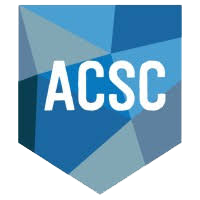 The world is indeed going digital, and not just because technology is dictating it. This massive upheaval is the result of change agents such as the cloud, mobile computing, social media, big data analytics, and the consumerization of IT; all of these have transformed how the world does business today. Is your organization keeping up with the times? Read on to brush up on the topic of hybrid IT, and find out why 63 percent of organizations are now pursuing a hybrid IT approach, according to a Harvard Business Review survey.
The world is indeed going digital, and not just because technology is dictating it. This massive upheaval is the result of change agents such as the cloud, mobile computing, social media, big data analytics, and the consumerization of IT; all of these have transformed how the world does business today. Is your organization keeping up with the times? Read on to brush up on the topic of hybrid IT, and find out why 63 percent of organizations are now pursuing a hybrid IT approach, according to a Harvard Business Review survey.
What is Hybrid IT and Why Does it Matter?
Although the hybrid cloud plays a big part in this new technology strategy, hybrid IT is much more than a cloud deployment model. While virtualization and the software defined data center are certainly important facets of hybrid IT, it is not limited to a particular architecture. This IT approach is all about the big picture, the master view concerning the delivery of digital services to the users that need them, when they need them. For example, a hybrid IT environment may include web servers that deliver applications for mobile devices as well as legacy applications hosted in an on premise data center. It’s about deploying services to customers as quickly as possible in the most cost-efficient, consistent, and secure delivery method.
Hybrid IT Allows for Optimal Resource Allocation
To use an effective analogy to describe the process of hybrid IT, think of a hybrid automobile. Just as Hybrid IT is composed of both on and off premise infrastructure, a hybrid automobile consists of two engines: a modern day electric motor and a traditional gasoline engine. The car is run by a software management system that is designed to deliver optimum levels of fuel efficiency and performance. When accelerating from a full stop, the car draws power from the battery and exclusively uses the electric motor. Once the car reaches normal cruising speed, the car will completely switch to the combustion engine, at which point the gasoline engine can also repower the generator. During periods of heavy acceleration, both engines may be utilized to maximize driving performance.
Just as the hybrid automotive management system matches the best power source to fit each individual driving condition, hybrid IT is about matching the ideal delivery system for each service. Hybrid IT is not about simply having, “Some of on-prem[ise] and cloud,” says Mark Peters, Senior Analyst for ESG Global Research. Instead, “Hybrid IT is about having some of each working in dynamic, as-seamless-as-possible, and optimal harmony.”
Hybrid IT is a unified infrastructure that incorporates multiple networks that connect systems to users. In the middle of these two architectures is the IT Broker, who like the management system of the hybrid vehicle, determines the optimum solution for your enterprise’s needs.
How Hybrid IT Can Work For Your Organization
The overall mission of hybrid IT is to deliver the right services for your organization’s needs, recognizing that no one size fits all; it’s about instant provisioning tools that deliver the desired service in automated fashion within the most suitable architecture. Because of this goal, hybrid IT gives organizations the opportunity to consider a workload’s resources, security and performance needs before determining whether it is a better fit for the cloud or if the solution should remain on-premises.
Essentially, hybrid IT is about providing IT as a Service (ITaaS) by providing solutions according to scale, performance, speed and cost. Organizations that fail to do this run the risk of internal customers bypassing the IT organization completely and consuming IT services from third party cloud vendors, possibly putting the organization’s security in jeopardy.
Learn more about Hybrid IT in our white paper, “An Introduction to the New IT Approach Called Hybrid IT.”











